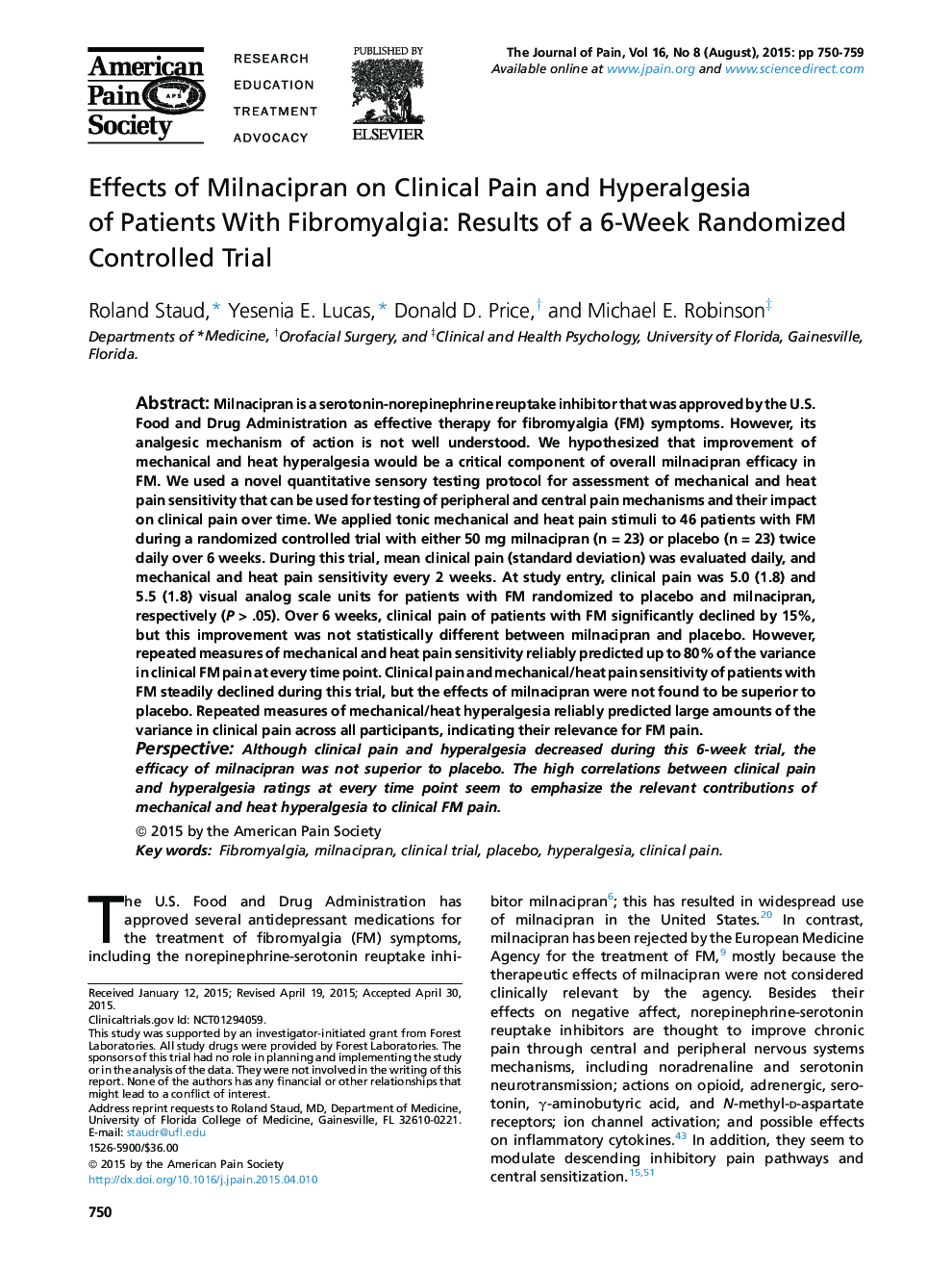| کد مقاله | کد نشریه | سال انتشار | مقاله انگلیسی | نسخه تمام متن |
|---|---|---|---|---|
| 2728634 | 1566730 | 2015 | 10 صفحه PDF | دانلود رایگان |
• A 6-week randomized controlled trial of milnacipran or placebo showed significant reduction in clinical fibromyalgia pain.
• The magnitude of clinical pain reductions was not statistically different between milnacipran and placebo.
• Mechanical and heat hyperalgesia predicted up to 80% of the variance in clinical fibromyalgia pain.
• Fibromyalgia patients' hyperalgesia was strongly associated with their clinical pain.
Milnacipran is a serotonin-norepinephrine reuptake inhibitor that was approved by the U.S. Food and Drug Administration as effective therapy for fibromyalgia (FM) symptoms. However, its analgesic mechanism of action is not well understood. We hypothesized that improvement of mechanical and heat hyperalgesia would be a critical component of overall milnacipran efficacy in FM. We used a novel quantitative sensory testing protocol for assessment of mechanical and heat pain sensitivity that can be used for testing of peripheral and central pain mechanisms and their impact on clinical pain over time. We applied tonic mechanical and heat pain stimuli to 46 patients with FM during a randomized controlled trial with either 50 mg milnacipran (n = 23) or placebo (n = 23) twice daily over 6 weeks. During this trial, mean clinical pain (standard deviation) was evaluated daily, and mechanical and heat pain sensitivity every 2 weeks. At study entry, clinical pain was 5.0 (1.8) and 5.5 (1.8) visual analog scale units for patients with FM randomized to placebo and milnacipran, respectively (P > .05). Over 6 weeks, clinical pain of patients with FM significantly declined by 15%, but this improvement was not statistically different between milnacipran and placebo. However, repeated measures of mechanical and heat pain sensitivity reliably predicted up to 80% of the variance in clinical FM pain at every time point. Clinical pain and mechanical/heat pain sensitivity of patients with FM steadily declined during this trial, but the effects of milnacipran were not found to be superior to placebo. Repeated measures of mechanical/heat hyperalgesia reliably predicted large amounts of the variance in clinical pain across all participants, indicating their relevance for FM pain.PerspectiveAlthough clinical pain and hyperalgesia decreased during this 6-week trial, the efficacy of milnacipran was not superior to placebo. The high correlations between clinical pain and hyperalgesia ratings at every time point seem to emphasize the relevant contributions of mechanical and heat hyperalgesia to clinical FM pain.
Journal: The Journal of Pain - Volume 16, Issue 8, August 2015, Pages 750–759
